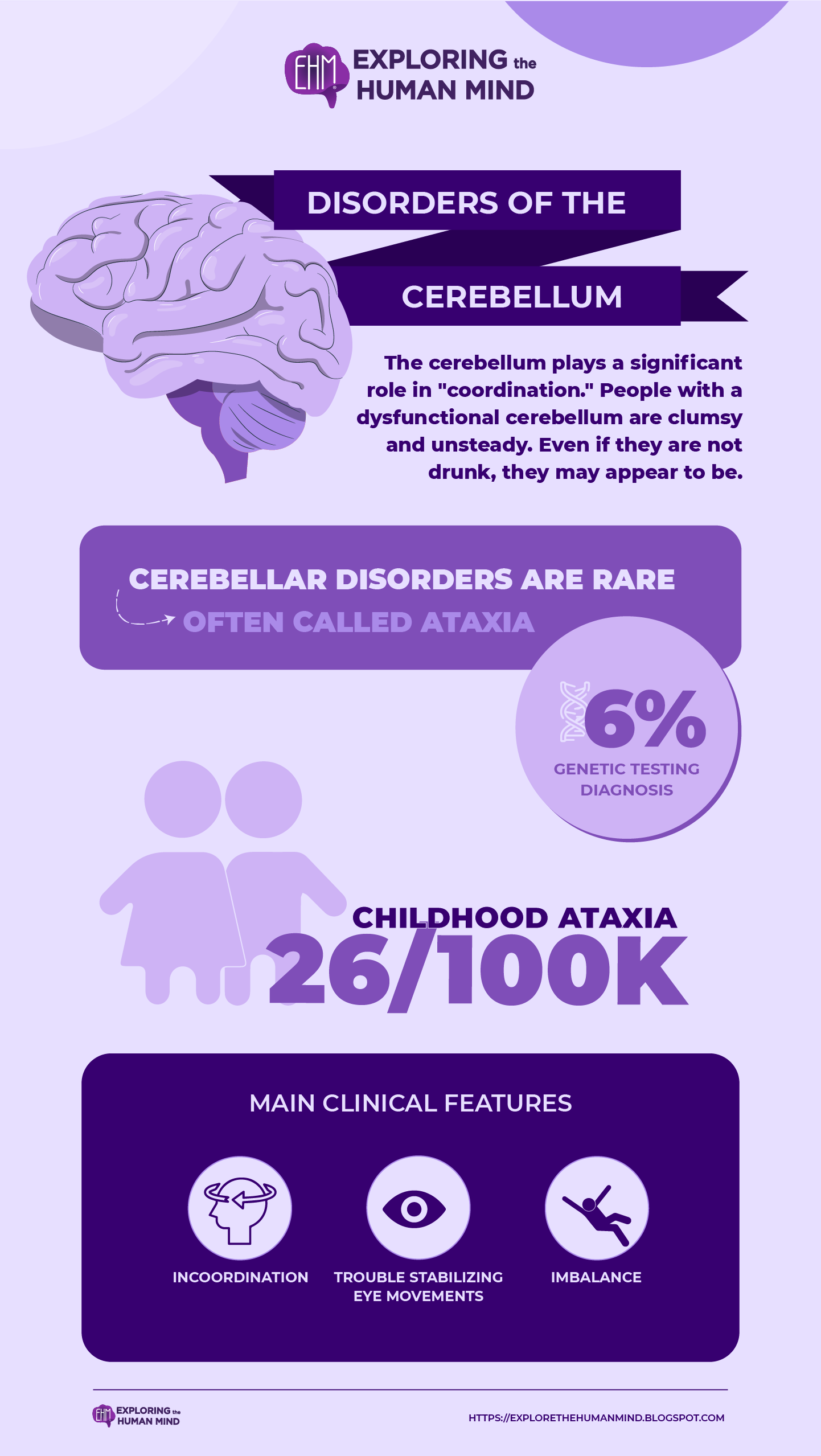Disorders of the Cerebellum
Introduction
The cerebellum, like the basal ganglia, has long been thought to be part of the motor system because damage to it causes motor disturbances. Damage to the cerebellum, unlike damage to the basal ganglia, does not result in a lack or poverty of movement. Cerebellar dysfunction, on the other hand, is characterized by a lack of movement coordination. In addition, unlike the basal ganglia (and motor cortex), cerebellar damage causes impairments on the ipsilateral side of the body.
Cerebellar disorders are rare. They are frequently referred to as "ataxia". Ataxia is a broad term that refers to the general impairments in movement coordination and accuracy that occur as a result of cerebellar damage.
The prevalence of childhood ataxia is 26/100,000 children. Ataxia is rare compared to cerebral palsy (211/100,00) and autism (620/100,000).

vectors by Freepick; graphic design by Vadot
Types
Cerebellar disorders are distinguished clinically by incoordination, imbalance, and difficulty stabilizing eye movements. There are two types of cerebellar syndromes: midline and hemispheric.- Midline cerebellar syndromes are distinguished by an imbalance. Individuals are unsteady, unable to stand in Romberg with their eyes open or closed, and unable to perform tandem gaits
- Hemispheric cerebellar syndromes are characterized by limb incoordination. There may be movement decomposition, dysmetria, and rebound
Movement disorders like Parkinson’s disease or Huntington’s disease will have different effects from carbon monoxide poisoning or heavy metal poisoning.
Genetic testing yields very low results in sporadic ataxia (i.e., no family history), it only yields a diagnosis in 6% of cases. Given the high cost and low benefit of genetic testing, we believe most people will opt out. This equation will change when it is possible to edit genes.
Reference:
Cerebellar Disorders. (2022). Dizziness-And-Balance.com. https://dizziness-and-balance.com/disorders/central/cerebellar/cerebellar.htm
Disorders of the Motor System (Section 3, Chapter 6) Neuroscience Online: An Electronic Textbook for the Neurosciences | Department of Neurobiology and Anatomy - The University of Texas Medical School at Houston. (2020). Tmc.edu. https://nba.uth.tmc.edu/neuroscience/m/s3/chapter06.html






Comments
Post a Comment